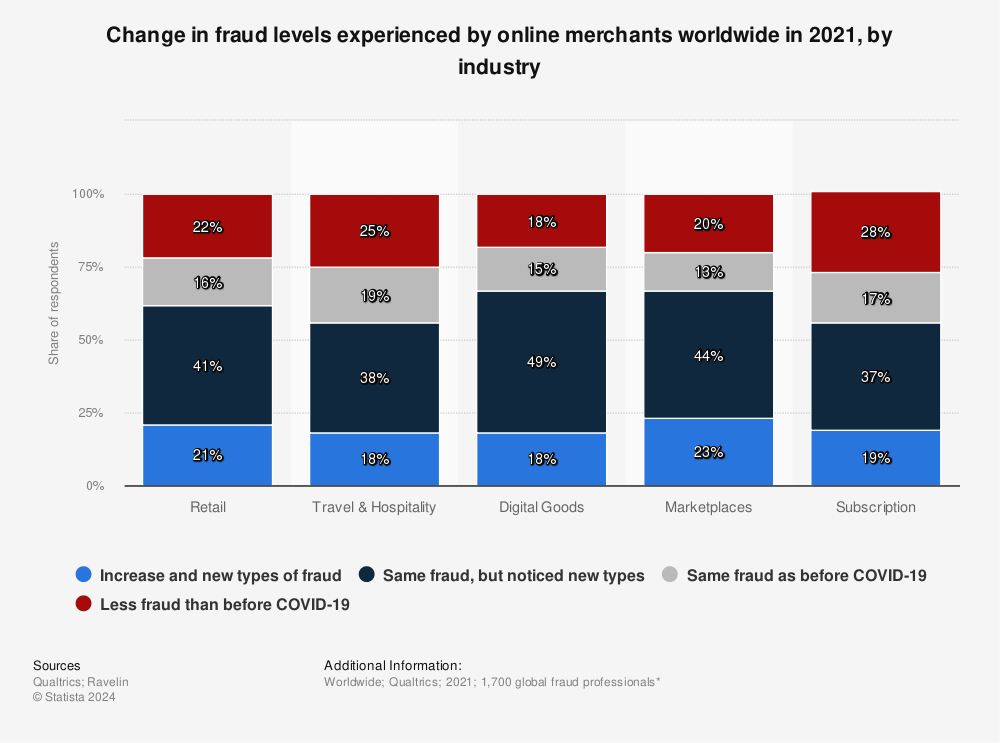How to Protect Your E-Commerce Customers from Getting Scammed
As e-commerce continues to cement itself as an absolute essential to daily life, the likelihood of digital scams against customers is increasing. Fixing the damage caused by scams is a nightmare, whether that’s in terms of compensating the customer, dealing with government regulations, catching the perpetrator, and recovering your business’s reputation. eCommerce companies are increasingly being held responsible for the damage caused to their customers, and are on the hook to provide restitution, even if they had nothing to do with the theft.

In 2022, eCommerce companies lost nearly 3% of revenue due to fraud, with every $100 in fraudulent orders resulting in a $207 loss for the business. This burden isn’t going away for businesses, either. From increased pressure on when and how to disclose cyberattacks, and banks increasingly passing on fraud costs to the business instead of the customer (or absorbing it themselves), eCommerce business owners must proactively find effective protection not only for themselves, but for their customers.
Worldwide legislation is moving in the direction that takes away more protection from businesses, holding them accountable for attacks on their customers. As such, it’s imperative that you as an eCommerce business owner take measures to prevent your customers from being scammed. This article will examine some of the most prevalent threats against eCommerce businesses today and what you can do to protect your customers, preventing major losses in both finances and customer faith.
Phishing and Spamming
Phishing, a cyberattack method in which a communication (typically email or text message) is sent from a bad actor disguised as a legitimate party, is a major source of e-commerce scams and is continuing to grow in effectiveness. In the UK, for example, 83% of cyber attacks on businesses were caused by phishing.

For eCommerce customers, the damage is even greater with the increasing ability of data brokers to sell personal information. This is compounded by today’s rapidly advancing technology, with the ability to use AI to build very convincing messages for victims. By using personal data such as search history, previous purchases, and key pieces of personal identification information, cybercriminals can lower a customer’s defenses without them realizing there was ever a threat.
Spamming attacks are higher in volume but lower in accuracy, as many spam messages are often sent at once, typically to a user’s email. But a phishing email found in the middle of a dozen spam emails can easily stand out as authentic. Receiving a phishing email from what appears to be a legitimate company you are familiar with, especially if it pertains to something you have recently purchased or searched for, can be extremely effective. Spamming, however, is less sophisticated. All it takes is a moment of thoughtlessness to click on a message and link, and malware (or even ransomware) could be automatically installed.
eCommerce businesses that aren’t proactive in defending against phishing and spamming will completely miss this threat until their customers report the attacks and the damage caused. With new regulations looming, this will result in the business being held responsible for at least some of the recompense. However, there are steps eCommerce companies can take to mitigate the damage.
Firstly, make sure you maintain regular communication with your customers. Explain to them the style in which you communicate to make them familiar with your business’s lingo, and if possible, don’t utilize in-email or in-message links. Always make sure customers know never to click a link in a suspicious message. Urge your customers to set up their own anti-phishing software, many of which are free for a single email address. While many email services have a built-in spam filter, additional tools such as MailWasher (also free for a single email) can provide extra protection. A best practice used by e-commerce sites is to set up a reporting process for customers if they receive what they believe to be a phishing email. If you set up an easy way for your customers to report it, you can confirm if it is valid or fraudulent, and can send out a notice to all customers to be on the lookout for this specific threat.
Website Spoofing
While spamming can jam up your customers’ email and messaging, creating a chaotic situation that makes them more vulnerable to phishing, the growing trend of website spoofing is extremely sophisticated and can be very difficult for the average customer to detect.
Website spoofing occurs when a bad actor lures a customer onto a website that looks, acts, and feels nearly identical to a genuine brand site. A customer makes a purchase on the fake site, handing over their sensitive information to the bad actor.
Suppose your business’s website has a login. In that case, the customer’s username and password will also be compromised, enabling the bad actor to harvest their information while also being able to make purchases using their credit card.
However, the damage is not just limited to the customer when they are defrauded. It’s also against your business. In addition to the financial repercussions of cybertheft and your likelihood as a business owner to need to pay back your customer, there is a matter of broken trust when customers are tricked into using a spoofed site, which will drive them away permanently, which will be devastating for your business. In this way, website spoofing is extremely dangerous as all of this can be done without your business’s firewall ever being touched.
Unlike spamming or phishing, companies can’t simply set up filters at known vulnerability points such as email or WhatsApp. Spoofed sites could be set up across the globe and could lure customers using a variety of tactics. While a company could feasibly use resources to constantly search for spoofed websites, there is still the “window of exposure”, the time between when the fake site is up and when it is taken down. Taking down a website is not always a quick process. It depends on where it is hosted, so there is a high risk of damage to customers during this time.
For this type of threat, using a professional website spoofing prevention service is recommended. Memcyco, for example, is a real-time solution that scans for spoofed sites, alerts customers in real-time if they visit a spoofed site, and helps with the site takedown process. Memcyco also provides full visibility into the attack, informing the company which customers fell victim and what the scope of the damage was. Brands using Memcyco also have the option to display a digital watermark on their website that proves the site’s authenticity to customers. As website spoofing is already very sophisticated and will only continue to evolve, consulting with a specialist to combat this fraud is a best practice.
Final Thoughts
Cybercriminals today have a plethora of ways to attack eCommerce customers, and they are getting more and more sophisticated with the growing use of data brokers, AI, and spoofing techniques. With regulations adapting to the modern reality, companies are more responsible now for preventing these attacks, whether they come from spamming, phishing, website spoofing, or a combination of all these tools. As an eCommerce business owner, you must embrace the role of protector, setting up open communication with your customers, creating ways for them to report suspicious behavior, and using best practices to reduce the chance of their downfall (and your business’s.)
Take precautionary measures and invest in prevention tools to proactively thwart cybercriminals from defrauding your customers. Doing so can be the difference-maker in your business’s success.



